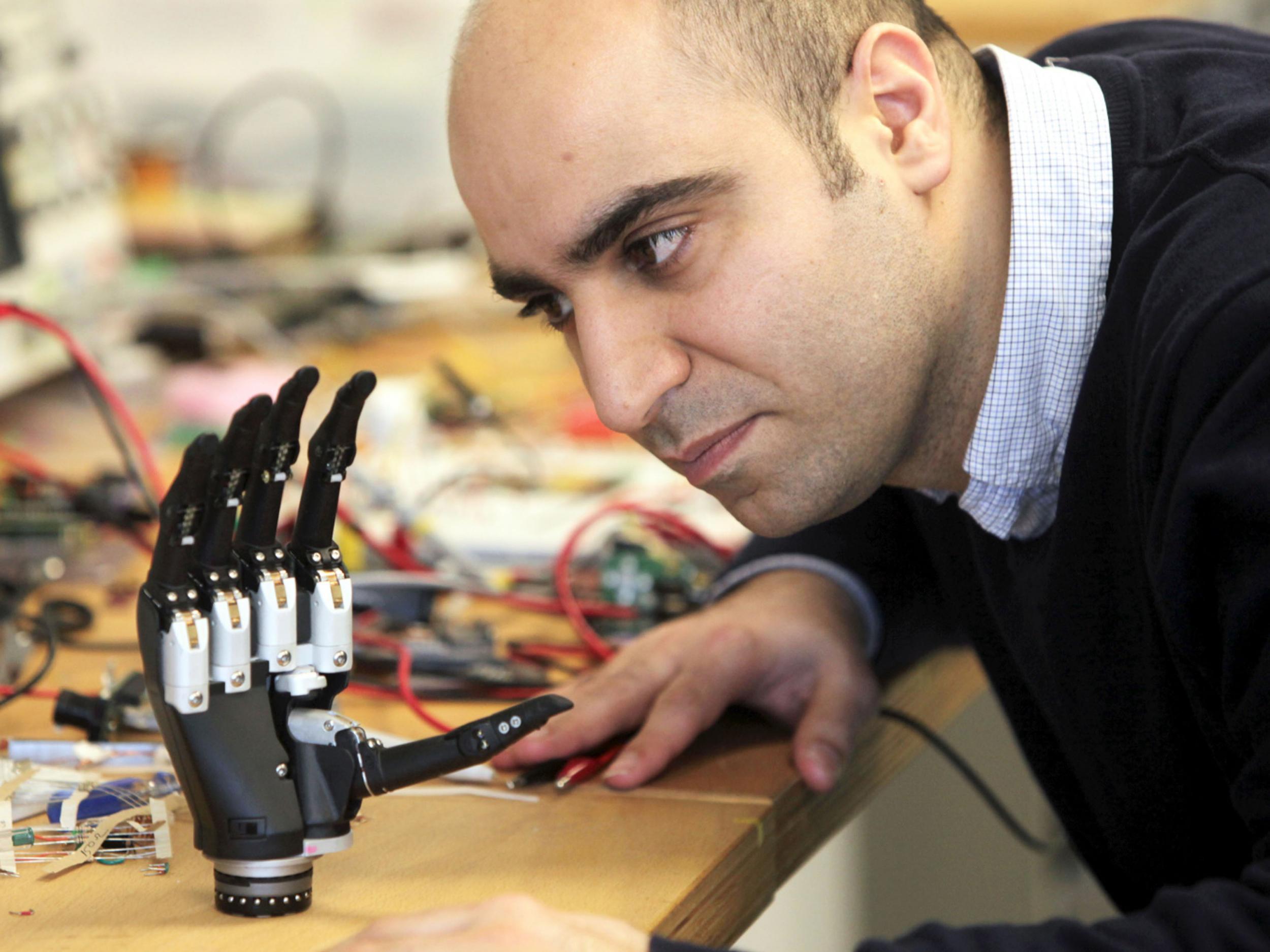Scientists unveil revolutionary bionic hand that ‘sees’ objects and triggers grip within milliseconds
Camera fitted to device rapidly photographs items in front of it and feeds information to electronic brain, enabling it to pick things up without breaking them

Your support helps us to tell the story
From reproductive rights to climate change to Big Tech, The Independent is on the ground when the story is developing. Whether it's investigating the financials of Elon Musk's pro-Trump PAC or producing our latest documentary, 'The A Word', which shines a light on the American women fighting for reproductive rights, we know how important it is to parse out the facts from the messaging.
At such a critical moment in US history, we need reporters on the ground. Your donation allows us to keep sending journalists to speak to both sides of the story.
The Independent is trusted by Americans across the entire political spectrum. And unlike many other quality news outlets, we choose not to lock Americans out of our reporting and analysis with paywalls. We believe quality journalism should be available to everyone, paid for by those who can afford it.
Your support makes all the difference.A revolutionary bionic hand that “sees” objects and instantly decides what kind of grip to adopt has been developed by scientists.
The device could lead to a new generation of prosthetic limbs giving the wearer the ability to reach for objects without thinking, researchers say.
A camera fitted to the hand rapidly takes a picture of the object in front of it and feeds the information to an electronic “brain”.
The computer automatically assesses the object's shape and size and “within milliseconds” triggers the correct movements needed to pick it up, whether a light pinch or firm grip.
A small number of amputees have already trialled the technology, developed at the University of Newcastle.
Dr Kianoush Nazarpour, a senior lecturer in biomedical engineering at the university, said: “Prosthetic limbs have changed very little in the past 100 years.
“The design is much better and the materials are lighter weight and more durable but they still work in the same way.
“Using computer vision, we have developed a bionic hand which can respond automatically.
“In fact, just like a real hand, the user can reach out and pick up a cup or a biscuit with nothing more than a quick glance in the right direction.
“Responsiveness has been one of the main barriers to artificial limbs.
“For many amputees the reference point is their healthy arm or leg so prosthetics seem slow and cumbersome in comparison.
“Now, for the first time in a century, we have developed an 'intuitive' hand that can react without thinking.”
Every year in the UK around 600 people suffer the loss of upper limbs, half of whom are aged 15 to 54. In the US, there are 500,000 new upper limb amputees each year.
Current prosthetic hands are controlled by myoelectric signals, muscular electrical activity recorded from the skin surface of the stump.
Learning to operate them takes practice, concentration and time, Dr Nazarpour said.
Developing the new system, based on artificial intelligence (AI), involved “teaching” a computer how to recognise the grip needed for different objects.
Lead researcher Phd student Ghazal Ghazaei said: “We would show the computer a picture of, for example, a stick. But not just one picture, many images of the same stick from different angles and orientations, even in different light and against different backgrounds and eventually the computer learns what grasp it needs to pick that stick up.
“So the computer isn't just matching an image, it's learning to recognise objects and group them according to the grasp type the hand has to perform to successfully pick it up.
“It is this which enables it to accurately assess and pick up an object which it has never seen before, a huge step forward in the development of bionic limbs.”
The team, whose work is reported in the Journal of Neural Engineering, programmed the hand to perform four different “grasps” suitable for picking up a cup, holding a TV controller, and gripping objects with a thumb and two fingers or a pinched thumb and first finger.
“The beauty of this system is that it's much more flexible and the hand is able to pick up novel objects, which is crucial since in everyday life people effortlessly pick up a variety of objects that they have never seen before,” Dr Nazarpour said.
The research is part of a larger project to develop a bionic hand that can sense pressure and temperature and transmit the information back to the brain.
Copyright Press Association
Join our commenting forum
Join thought-provoking conversations, follow other Independent readers and see their replies
Comments